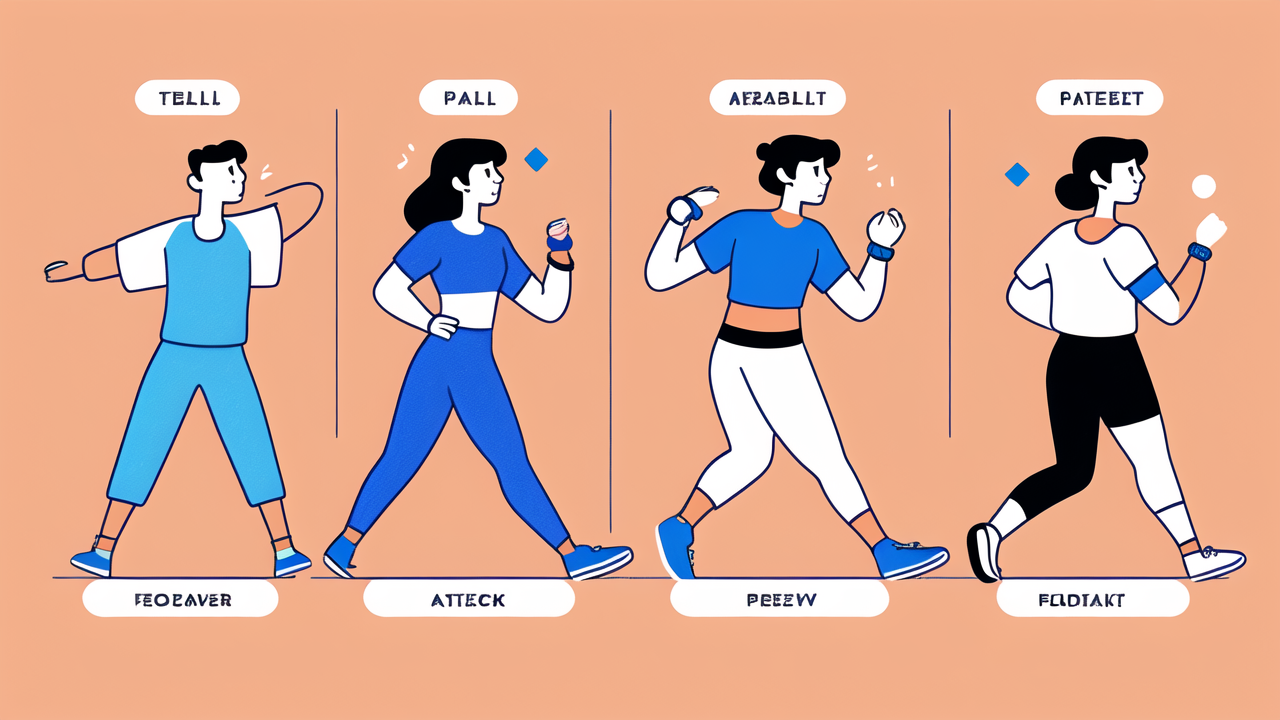Introduction to Smart Bracelets and Fitness Tracking
The Evolution of Fitness Wearables
Fitness wearables have come a long way since their inception. The journey began with simple pedometers. These devices counted steps and not much else. Then came the first wave of fitness trackers. They offered basic activity monitoring and sleep tracking.

Now, we have smart bracelets. These devices are a leap forward in technology. They combine the functions of fitness trackers with smartwatch features. Smart bracelets offer a wide range of health and fitness tracking options. They also provide connectivity and smart notifications.
The evolution has been rapid and exciting. Each new generation brings more features and better accuracy. Today's smart bracelets are like mini-computers on your wrist. They offer insights that were once only available in medical settings.
Key Features of Advanced Smart Bracelets
Modern smart bracelets are packed with features. Here are some key capabilities:
- Heart rate monitoring: Tracks your pulse throughout the day and during workouts.
- GPS tracking: Maps your runs, walks, and bike rides.
- Sleep analysis: Monitors sleep patterns and quality.
- Stress level monitoring: Measures stress based on heart rate variability.
- Blood oxygen monitoring: Checks your SpO2 levels.
- ECG readings: Some models can take electrocardiogram readings.
- Workout tracking: Recognizes various exercises automatically.
- Water resistance: Many are swim-proof for underwater workouts.
- Smart notifications: Alerts for calls, texts, and app notifications.
- Long battery life: Many last a week or more on a single charge.
These features make smart bracelets powerful tools for fitness and health management. They provide a comprehensive view of your physical activity and well-being.
Innovative Fitness Tracking Systems in Smart Bracelets
Integrating AI and Machine Learning
AI and machine learning are changing the game for smart bracelets. These technologies make devices smarter and more personalized. Here's how:

- Pattern recognition: AI learns your habits and provides tailored insights.
- Predictive analytics: It can forecast potential health issues based on your data.
- Adaptive coaching: ML algorithms create custom workout plans that evolve with you.
- Natural language processing: Some bracelets now understand voice commands.
- Anomaly detection: AI can spot unusual patterns in your health data.
These advances mean your smart bracelet becomes a more intelligent fitness companion. It doesn't just collect data. It interprets it and offers actionable advice. This makes achieving your fitness goals easier and more efficient.
How Smart Bracelets are Revolutionizing Exercise Routines
Smart bracelets are changing the way we approach exercise. They're making workouts more effective and engaging. Here's how:
- Real-time feedback: Get instant data on your performance during workouts.
- Guided workouts: Follow on-screen instructions for various exercises.
- Goal setting and tracking: Set targets and monitor your progress over time.
- Competition features: Compete with friends or join global challenges.
- Recovery monitoring: Track your rest and recovery to prevent overtraining.
- Integration with fitness apps: Sync data with popular platforms for a broader view.
These features make exercise more structured and motivating. They turn fitness into a game-like experience. This helps users stay committed to their routines. Smart bracelets are like having a personal trainer on your wrist.
The Role of Smart Bracelets in Personal Health Management
Smart bracelets are becoming vital tools for personal health management. They offer insights that can improve overall well-being. Here's how they contribute:
- Continuous health monitoring: Track vital signs 24/7.
- Early warning systems: Detect potential health issues before they become serious.
- Medication reminders: Help users stick to their medication schedules.
- Stress management: Offer breathing exercises and mindfulness reminders.
- Hydration tracking: Remind users to drink water throughout the day.
- Menstrual cycle tracking: Help women monitor their cycles and fertility.
These features empower users to take control of their health. They provide data that can be shared with healthcare providers. This leads to more informed discussions and better health outcomes.
The Impact of Smart Bracelets on the US Fitness Industry
Analyzing Market Trends and Consumer Adoption
The US fitness industry is seeing a significant shift due to smart bracelets. Here are some key trends:

- Rising adoption rates: More Americans are buying smart bracelets each year.
- Integration with gyms: Many fitness centers now offer smart bracelet connectivity.
- Insurance incentives: Some health insurers offer discounts for using fitness trackers.
- Corporate wellness programs: Companies are incorporating smart bracelets into employee health initiatives.
- Demographic expansion: Usage is growing across all age groups, not just young tech-savvy users.
Consumer adoption is driven by several factors:
- Increasing health consciousness
- Desire for data-driven fitness approaches
- Affordability of devices
- Improved accuracy and features
These trends suggest that smart bracelets are becoming a mainstream fitness tool in the US.
Smart Bracelets as a Tool for Enhancing Fitness Regimens
Smart bracelets are proving to be valuable assets in fitness routines. They offer several benefits:
- Personalized workout plans: Devices create custom programs based on your goals and progress.
- Accountability: Regular reminders and progress tracking keep users motivated.
- Efficiency: Data helps users optimize their workouts for better results.
- Safety: Heart rate monitoring prevents overexertion.
- Variety: Access to different workout types keeps routines fresh and engaging.
Fitness professionals are also embracing these devices. They use the data to:
- Create more effective training plans
- Monitor client progress remotely
- Adjust routines based on real-time data
Smart bracelets are bridging the gap between professional guidance and personal fitness journeys.
Predictions for Future Smart Bracelet Developments in the US
The future of smart bracelets in the US looks promising. Here are some predictions:
- Advanced health monitoring: Devices may detect conditions like diabetes or heart disease.
- Integration with telemedicine: Direct communication with doctors through the device.
- Improved accuracy: Sensors will become more precise, rivaling medical-grade equipment.
- Extended battery life: Longer-lasting batteries will reduce charging frequency.
- Customizable designs: More options to personalize the look and feel of devices.
- Enhanced data privacy: Stronger security measures to protect sensitive health information.
- Augmented reality features: AR could provide immersive workout experiences.
These developments could further cement smart bracelets as essential health and fitness tools. They may become as common as smartphones in everyday life. The US fitness industry will likely continue to adapt and innovate around these devices.




Leave a comment
This site is protected by hCaptcha and the hCaptcha Privacy Policy and Terms of Service apply.